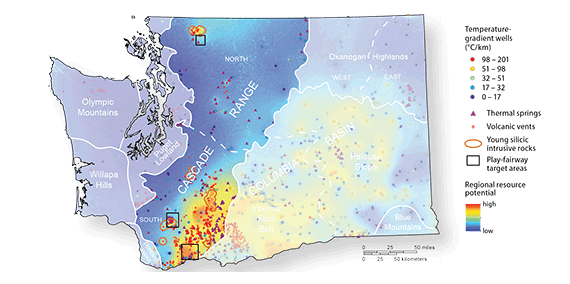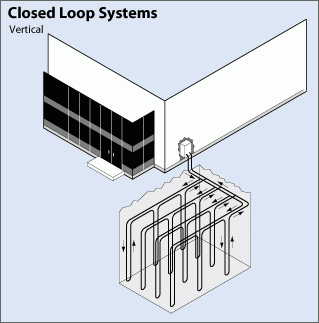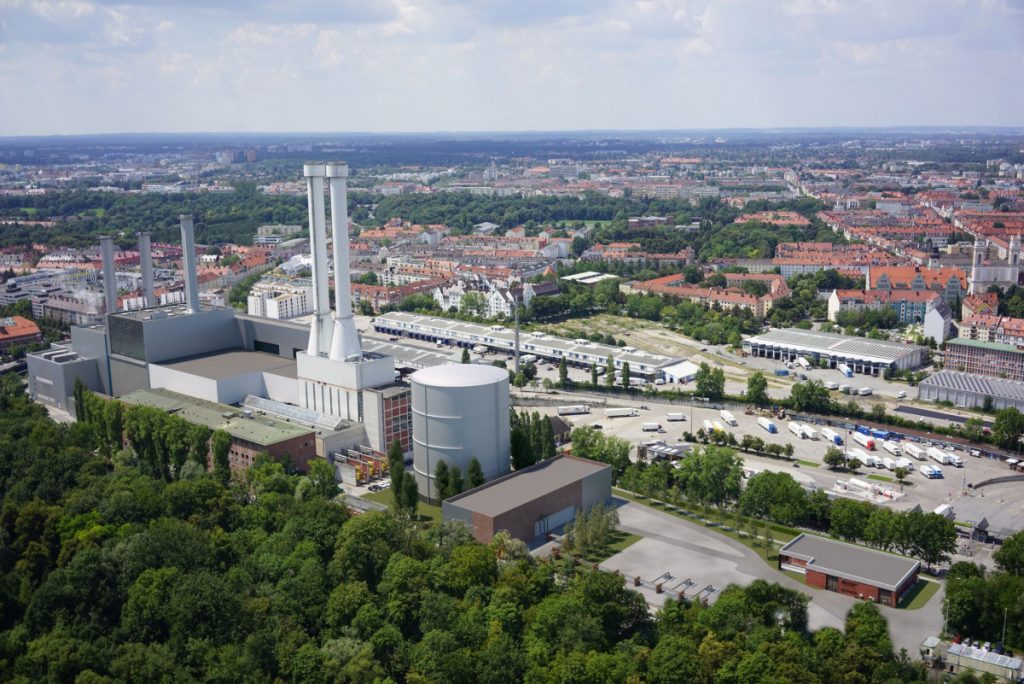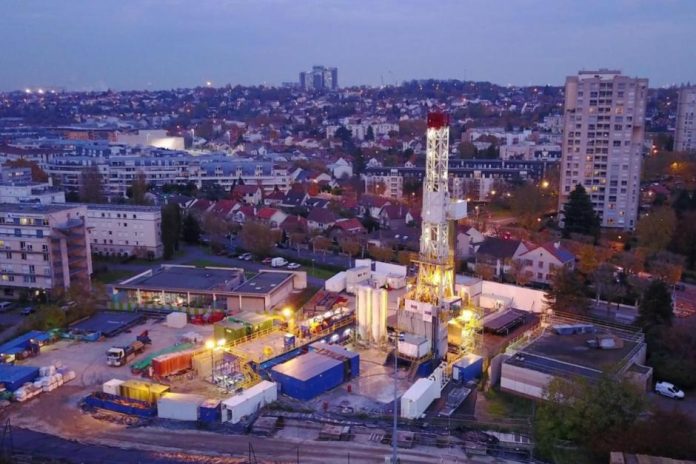In 2014 and 2017, the Washington Geological Survey was awarded grants by the Department of Energy to prospect and validate geothermal resources throughout the State of Washington. Washington’s Department of Natural Resources (DNR) produced a geothermal favorability map using modeling techniques.
In Washington state, the Cascade mountain range is of the upmost interest to the DNR. Mount Baker, Mount St. Helens, and the Goat Rocks Volcanic Complex are among the areas predicted to have conditions suitable for electricity production.

Geothermal energy at its very basic is just the heat energy stored and absorbed by the Earth. Places of high favorability are predicted to have accessible temperatures that are high enough for efficient energy production. Based on power plant type, sought after temperatures range from 225-360°F or higher.
Seattle and much of Washington’s urban population clusters are in areas of poor geothermal favorability, where underground temperature stays at a steady number between 45-75°F. Electricity from geothermal is a far cry from likely to be produced in our cities. Nevertheless, urban areas still have geothermal energy resources to exploit.
Taking Advantage of our Urban Heat Island
The earth is a natural and steady reservoir for thermal energy, mostly unaffected by the seasonal temperature changes in the surface and atmosphere. However, researchers have detected changes to this reservoir due to the effect of urbanization.
An artificial resource that cities produce is their heat island effect. A result of concentrated human activities, this effect boosts the natural ambient temperature of population centers. In mega cities such as Tokyo, Bangkok, and Shanghai, satellite data has measured increased subsurface temperatures of 7-12°C (12.6-21.6°F) compared to their surrounding temperatures.
This effect is even notable in smaller cities. In a study published by the Journal of Geophysical Research in 2004, Grant Ferguson found subsurface temperatures in Winnipeg, Canada to be 2°C (3.6°F) greater than background subsurface temperatures. He also found that groundwater temperature in a regional aquifer had increased 5°C (9°F).
This elevated subsurface temperature is still far from the temperature needed to efficiently produce electricity. However, the elevated temperature is suited to increase efficiency of geothermal heat pumps, a heating and cooling solution.
Heating and Cooling
Heating and cooling is where geothermal is best positioned for urban application. Geothermal energy is, in fact, already widely used to regulate temperature in our built environments. There heat pumps are used to access the steady temperatures of the subsurface. These ground-source heat pumps work by applying electricity to transfer heat from one reservoir to another reservoir.
For heating, fluid–often water or a water-based refrigerant– is drawn from an open or closed looping of pipes that access the thermal energy stored in the subsurface. Fluid heated by steady subsurface temperatures is then compressed in the heat pump, heating it up; that heated fluid is then used to heat a residence, cooling the fluid. The cooled fluid is next decompressed/cooled further and sent back underground where the subsurface temperature can heat up the fluid again and repeat the process. For cooling, the process is reversed and is just like how a refrigerator works.
The heat island effect allows heat pumps to heat at a higher efficiency because the system has to do less work to bring up a warmer refrigerant up to the desired temperature. Conversely, this makes cooling less efficient by making the heat pump do more work to cool down a higher temperature refrigerant.
The Department of Energy outlines four types of geothermal heat pumps, horizontal, vertical, pond/lake–those three are closed systems–and open loop systems. Horizontal and vertical systems are distinguished by how their piping is installed, horizontal systems are buried and take up a large horizontal footprint and vertical systems are often drilled 100 to 400 feet deep into the ground–vertical heat pumps are most applicable to urban settings as they’re less restricted by lot size.

The Pond/Lake system and Open-Loop system require a body of water that can act as a sufficient heat reservoir. Pond/Lake systems run a line from the building to a water source at least ghtei feet under surface. The open-loop system is similar, but instead of using its own fluid it circulates water from the water source.
Cost and Environmental Concerns
Installation of a geothermal heat pump is definitely one of the more expensive heating/cooling solutions. Estimates are scattered, but for an average 2,000 to 2,500 square foot residence, costs ranged from $5,000 to $30,000. The lower range likely covers water dependent geothermal heat pumps, so expect the average cost to fall between $15,000 to $20,000 range. Installing a geothermal heat pump in an urban environment may run above that average, as smaller lots may limit homeowners to vertical systems that require more expensive drilling.
While upfront costs are steep, the Environmental Protection Agency acknowledges geothermal heat pumps as the “most energy-efficient, environmentally clean, and cost-effective systems for heating and cooling buildings.” The Department of Energy estimates (perhaps generously) that an owner could recoup costs within 10 years. While number vary based on heating/cooling usage, that relatively quick return on investment happens because heating and air conditioning compose the majority of energy usage for American homes.
Estimates put temperature regulation at just over a half or even two-thirds of American home energy use. That fraction grows if water heating, a feature of some heat pumps, is included as a part of that energy calculation. The International Ground Sources Heat Pump Association claims up to 50% savings on water heating, 50-70% higher efficiency for spatial heating, and 20-40% higher efficiency for air conditioning.
While the long-term cost savings are convenient, upfront costs of geothermal is steep. Out of pocket, it may take a decade or more of operation for a geothermal heat pump to become price competitive with an air source heat pump–only $3,500 to $5,000. Note that air source heat pumps are have to do more work to bring air heated or cooled mediums to desired temperatures, making them less efficient than geothermal aka ground source heat pumps.
It’s also important to address the impact that drilling can have on the environment. Some geothermal power plant projects require drilling that has triggered small earthquakes in areas around fault lines. Fortunately, drilling for a vertical geothermal heat pump goes a very shallow depth (100 to 500 feet) compared to a large geothermal project (a few miles), lowering seismic risk.
Geothermal in our energy portfolio
While it may not be electricity, thermal energy is still an energy resource that consumers can use to reduce their electricity consumption. Geothermal heat pumps also provide another path for electrification for those who use gas furnace spatial heating–allowing for more renewable powered heating. Additionally, with the nature of heating and cooling peaking electricity demand, flattening of that demand reduces carbon footprints by reducing the need for carbon-fueled peaker plants.
As for electricity, Washington state is still exploring its geothermal resources. Sites at Mount Baker and Mount St. Helens, places with high favorability, started undergoing drilling to evaluate their potential for geothermal power plants in summer 2018. This work is expected to take several years.

Geothermal is already a part of our energy urban portfolio, but it remains a small fraction of the heat regulation systems that American households use. Approximately 50,000 geothermal systems are installed each year in the United States, a small dent in the roughly 130 million American households.
Cost is likely the greatest barrier for widespread ground source heat pumps, their less efficient air source counterparts are significantly cheaper. Some financial incentives do exist for ground source heat pumps, they are still cost-prohibitive. Heftier financial incentives and/or an accessible payment plan could open up geothermal to the average urban household.
Geothermal for heating and cooling is available to anyone with a provider, the budget, and space to install a piping system. It’s a renewable resource that cities should be making more use of, especially as the urban heat island effect only enhances the resource for our demanding heating needs.
Shaun Kuo is a junior editor at The Urbanist and a recent graduate from the UW Tacoma Master of Arts in Community Planning. He is a urban planner at the Puget Sound Regional Council and a Seattle native that has lived in Wallingford, Northgate, and Lake Forest Park. He enjoys exploring the city by bus and foot.



